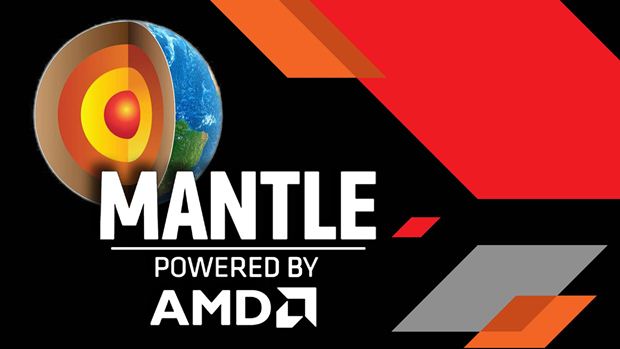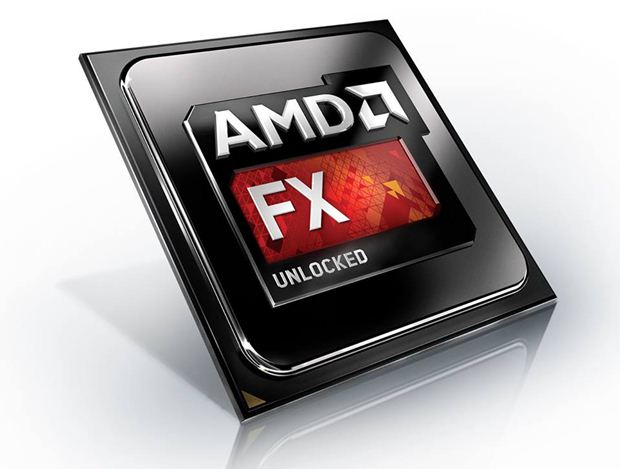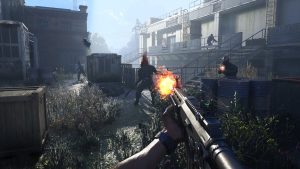
There is a popular saying that goes Give credit where credit is due and in AMD’s case this is most certainly true. AMD started off a revolution of sorts with its next generation graphics API, the Mantle. Long before Microsoft’s DirectX 12 was announced, AMD’s Mantle was already seeing some great results with increased draw calls, lower CPU overhead, reduction in command buffers submissions at the GPU level and runtime shader compilation overhead on the CPU.
To top this achievement, AMD is already a part of the current generation of consoles with its APU architecture. The current generation of consoles i.e. PS4 and Xbox One will probably sell over 120 million units combined in their life cycle so there is a guaranteed success ratio for AMD, not to mention the fact they have been continuously innovating with bringing out powerful GPUs at decent price points.
In short there is a lot happening at AMD. So in order to know more I sat with AMD’s Head of Global Technical Marketing, Robert Hallock to know where the company is heading in terms of Mantle, its potential competition with DirectX 12, the emergence of Free-Sync, the lack of any new CPUs from the company until 2016 and more.
Rashid Sayed: We are now heading into the first year of the new consoles [PS4 and Xbox One]. How does AMD feel about the success of the PlayStation 4 and Xbox One?
Robert Hallock: AMD is thrilled to be at the heart of the current-gen consoles! Powering great gaming experiences across console and PCs is already beginning to have obvious cross-platform benefits, too, and we’re very excited about that.
Rashid Sayed: I wanted to ask about Mantle and the efforts you are putting to make it a widely accepted API. Although we have seen several AAA developers adopting it, there are claims from certain developers that Mantle is only a temporary solution before DirectX 12 launches. What are your thoughts on this?
Robert Hallock: Mantle and DirectX 12 are complementary tools. Of course Mantle is particularly well-suited for AMD hardware, which allows us to expose future hardware features that might not be present in DirectX. For reasons like this, game developers are already telling us that they want Mantle and DirectX to coexist. Developers from Firaxis and Oxide Games have posted public blogs to this effect. From the perspective of a developer, it just makes sense. As the age-old adage goes: the right tool for the right job. You don’t throw your screwdriver away because you currently need a wrench.
"CPU-bound scaling is a function of the game’s API calls on the producer thread vs. the CPU’s ability to prepare those calls in the command buffer for the GPU’s consumer thread. Memory doesn’t play much of a role there."
Rashid Sayed: Staying on Mantle, the API is compatible with HLSL. How are you making optimizations and tuning so that it is compatible with DirectX 12 in the future?
Robert Hallock: We will share more on the future of Mantle in the coming months. We’re very excited about what lies ahead.
Rashid Sayed: Mantle’s API has been slated similar to the PS4’s API. Do you think for the developer it will be easier to port between a PC game [using Mantle] and PS4?
Robert Hallock: We have previously commented that Mantle’s similarities to console API streamlines the path from console to PC and vice versa. We talked about it in our blog here.
Rashid Sayed: In my opinion, AMD is in a better position than its competitor and that is primarily due to your 100% share in the console market. Is it safe to assume that the technology used for PS4/Xbox One’s APU has laid the foundation of the future AMD hardware?
Robert Hallock: I can say this: AMD is constantly innovating. We have incredibly talented engineers at the helm—like Raja Koduri, Joe Macri and Jim Keller—that are literally defining the future of our industry. We’re very confident in that future, and we will be talking about it when the time is right.
Rashid Sayed: Talking about CPUs, AMD had done its fair share of work in that field. CPUs are still using DDR3 memory whereas GPUs are already on GDDR5, which obviously results into performance and bandwidth bottlenecks. Do you think with the adoption of DDR4, this can be resolved?
Robert Hallock: I do not believe DDR3 memory presents any sort of bottleneck to a modern graphics card. CPU-bound scaling is a function of the game’s API calls on the producer thread vs. the CPU’s ability to prepare those calls in the command buffer for the GPU’s consumer thread. Memory doesn’t play much of a role there.
"We pitted the AMD A10-7850K with Mantle against the Intel i5-4690 with DirectX at1080p, low preset, a huge number of draw calls. The A10-7850K delivered 32 average FPS at 80W system power vs. 15 FPS at 65W system power. That’s a performance/watt advantage of 1.7x in AMD’s favor."
Rashid Sayed: There will be no new CPU architecture from AMD till 2016. The CPU evolution hasn’t been able to keep up with the GPU and this will further slow down the process. What are your thoughts on this?
Robert Hallock: I think that smart software, empowered with the ability to properly utilize multi-core CPUs, is making a big difference in the competitive landscape. For example the game Thief, which offers Mantle support,clearly shows AMD processors in the lead at resolutions used by millions of gamers.
Mantle is also proving that AMD processors can have a significant power efficiency advantage over competing processors when they’re properly utilized by a fully multi-core graphics API. I’ll give you an example: we analyzed the performance of the Star Swarm stress test. It’s available for free on Steam, and offers support for Mantle and DirectX 11. We pitted the AMD A10-7850K with Mantle against the Intel i5-4690 with DirectX at1080p, low preset, a huge number of draw calls. The A10-7850K delivered 32 average FPS at 80W system power vs. 15 FPS at 65W system power. That’s a performance/watt advantage of 1.7x in AMD’s favor.
Looking elsewhere, we’re seeing a 58% speedup in JPEG decoding using OpenCL-accelerated decode. People take pictures every day with digital cameras and smartphones, and transfer those photos to their PCs for editing and review. People used to think that the thumbnails for these pictures rendered very slowly because of CPU IPC bottlenecks or sluggishness in hard disk subsystem, but that’s clearly not true. It’s an API problem. AMD is solving that API problem in applications, too, with our work on OpenCL and HSA.
All of these scenarios prove that smart software is radically changing the competitive landscape. We are proving each and every day that there is a lot of room to improve the synergy between the software and the excellent potential of our hardware. And when that’s done, boy is it a different world.
Rashid Sayed: From a top level, can you tell us about how 4K adoption is improving and what kind of R&D are you guys doing for the future of 4K technology?
Robert Hallock: If you think back to the launch of the AMD Radeon R9 290X, our graphics card marked arguably the first time anyone could reasonably expect to play games at 4K on a single GPU. Sure, there were some games that needed two for peak image quality, but one was and is pretty solid for the majority of titles. We were also the first company to offer full support for 4K SST displays in our driver. 4K adoption is very popular amongst the elite enthusiasts, but understandably slower being adopted in lower-end segments. I couldn’t characterize the rates with hard numbers as that’s not my area of expertise, but this is the sense I’m getting from interacting with the AMD community every day.
Ultimately, the evolution of GPU horsepower is the biggest factor in driving 4K forward. Graphics being such an important part of our business, of course, you can count on great progress on that front as the years wind on.
"I personally do not envision 12GB being the standard, though lately we are seeing 8GB cards being advantaged. Reviewer data for games like Shadows of Mordor, for example, suggests that agame’s performance can improve by as much as about 15% on an 8GB card vs. a 4GB model."
Rashid Sayed: You guys do a fantastic job at getting high end GPUs at decent budgets but I wanted to ask about the silent, ongoing war between AMD and Nvidia for the ‘most power graphics card’. Although both companies have done an admirable joul in raising the bar higher, I am wondering if there is a practical implementation to these cards. Except the enthusiasts, whose numbers are extremely, do you see 12GB GPUs being the standard in the immediate future?
Robert Hallock: I personally do not envision 12GB being the standard, though lately we are seeing 8GB cards being advantaged. Reviewer data for games like Shadows of Mordor, for example, suggests that a game’s performance can improve by as much as about 15% on an 8GB card vs. a 4GB model. There are several 8GB AMD Radeon R9 290X GPUs entering the market from our partners to meet that challenge.
As far as “raising the bar” goes, I’m pleased that AMD continues to offer the world’s fastest graphics card: the AMD Radeon R9 295X2. It’s performance has gone unchallenged for months, and continues to receive praise for all aspects of its design.
Rashid Sayed: AMD is highly critical about Nvidia’s Gameworks but don’t you think this is anadd on for users who prefer Nvidia? Furthermore, is AMD working on a competitive solution?
Robert Hallock: AMD already makes game-enhancing graphics samples available for free in our public graphics SDK. Mantle was conceived to one day be a public SDK. Keeping this material free and open ensures that gamers can receive code from the developer that’s been vetted against, and optimized for, all industry hardware. The same cannot be said for Gameworks, which remains a mystery to developers unless they commit to a special license for which there are no public details.
Let’s be very clear: to date, Gameworks code has been forced to run on all graphics vendors – itis not isolated to Nvidia customers.Isn’t it disturbing that all of the Gameworks-enabled titles to date have not offered similar optimizations for AMD Radeon customers and have forced these customers to run code optimized for a different product, often at a penalty?That is a disservice to the significant percentage of the gaming public that runs AMD Radeon graphics, and it’s a disservice to the ingenuity of the developers.
Rashid Sayed: So besides Tress FX, we haven’t seen anything new announced for a while. What are you guys working on next?
Robert Hallock: I cannot speculate on the future, but we’re very excited about what TressFX 2.0 is offering gamers and developers. We recently published a blog about the improvements, and I think people will appreciate the progress we have made.
Rashid Sayed: What is AMD doing in the mobile space, more specifically Mantle, especially given that DX12 will also launch on mobile?
Robert Hallock: Mantle is already compatible with any APU that features the Graphics Core Next architecture, be it a low-wattage APU or a more robust desktop chip. As it is widely known, Mantle makes a big difference for systems with more modest processors, much like the ones you would find in a tablet, so we’re excited about this synergy.
"Any IHV will be able to create a Mantle solution for themselves, and it is on them to decide whether or not they want to catch up to AMD in the area of low-overhead, high-throughput and incredibly efficient graphics workloads."
Rashid Sayed: AMD announced Free-Sync earlier this year. Not much is known about it. Will it be possible for you to provide some top level details on the same and whether it will also be available on PS4 and Xbox One in some form?
Robert Hallock: We maintain a public FAQ that contains a complete repository of all the information we’ve shared to date: how it works, why it’s a good solution, how DisplayPort Adaptive-Sync and FreeSync are related (and different!) and so on.
Rashid Sayed: So when one compares it to Nvidia G-Sync, what kind of advantages are you guys offering?
Robert Hallock: There are three key advantages FreeSync holds over G-Sync: no licensing fees for adoption, no expensive or proprietary hardware modules, and no communication overhead.
The last benefit is essential to gamers, as FreeSync does not need to poll or wait on the display in order to determine when it’s safe to send the next frame to the monitor. You can learn more about how that works here. Ultimately, it’s designed for smooth/stutter-free/tearing-free gaming. Couldn’t be simpler!
Of course user cost is also important, and eliminating the need for expensive/proprietary modules in the monitor is a great way to encourage reduced product cost. Not charging licensing fees to manufacturers, because we pursued an open industry standard, is also a great influence on total user cost.
We think it’s shaping up to be the ideal solution for gamers.
Rashid Sayed: Switching back to Mantle once again, Intel had approached for access to API. Is there any progress on that front?
Robert Hallock: Other IHVs will receive access when we exit beta and make the API public for download. Any IHV will be able to create a Mantle solution for themselves, and it is on them to decide whether or not they want to catch up to AMD in the area of low-overhead, high-throughput and incredibly efficient graphics workloads. At this time, though, Mantle is still being privately developed by AMD and nearly 100 ISVs.


















